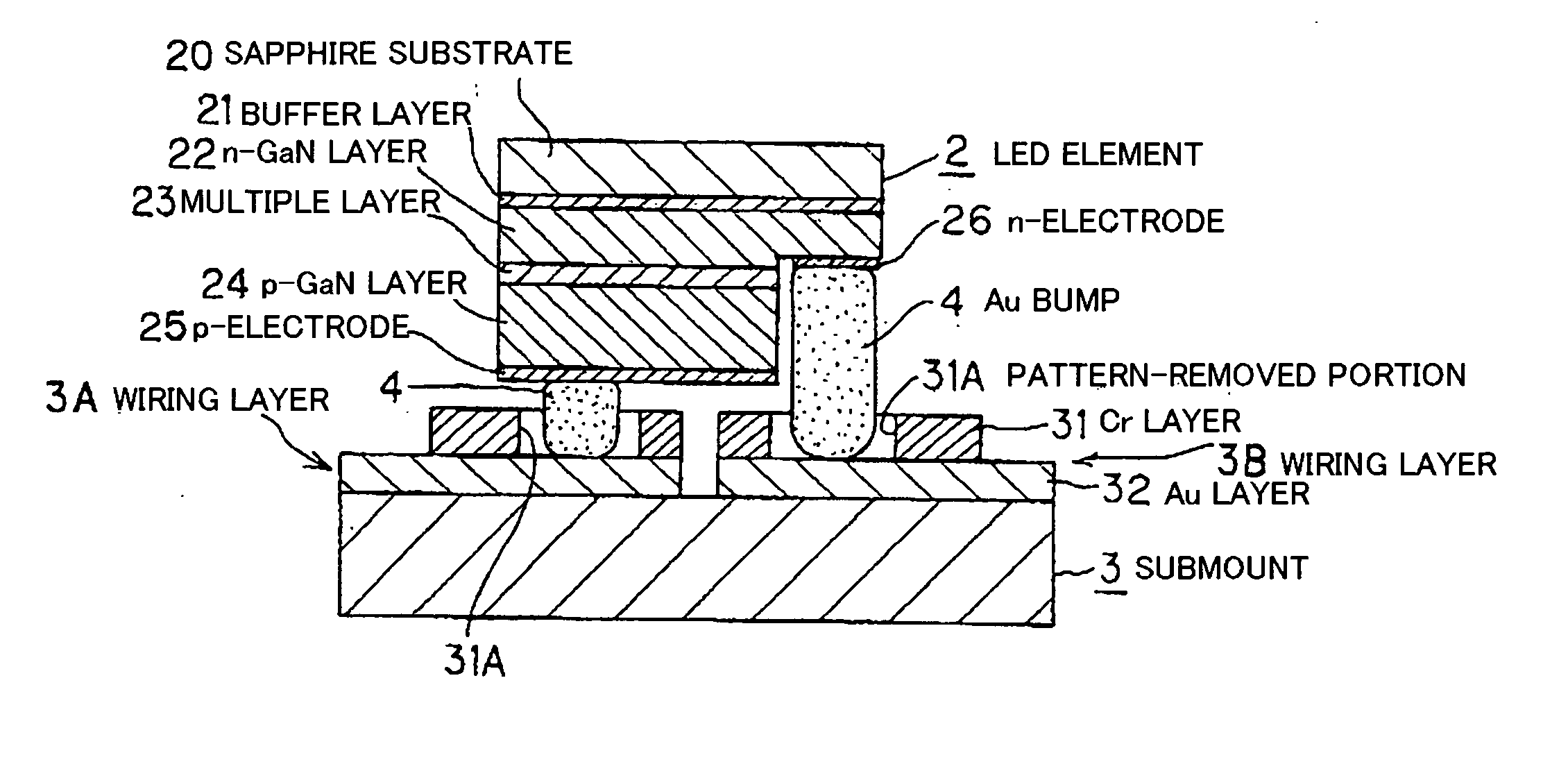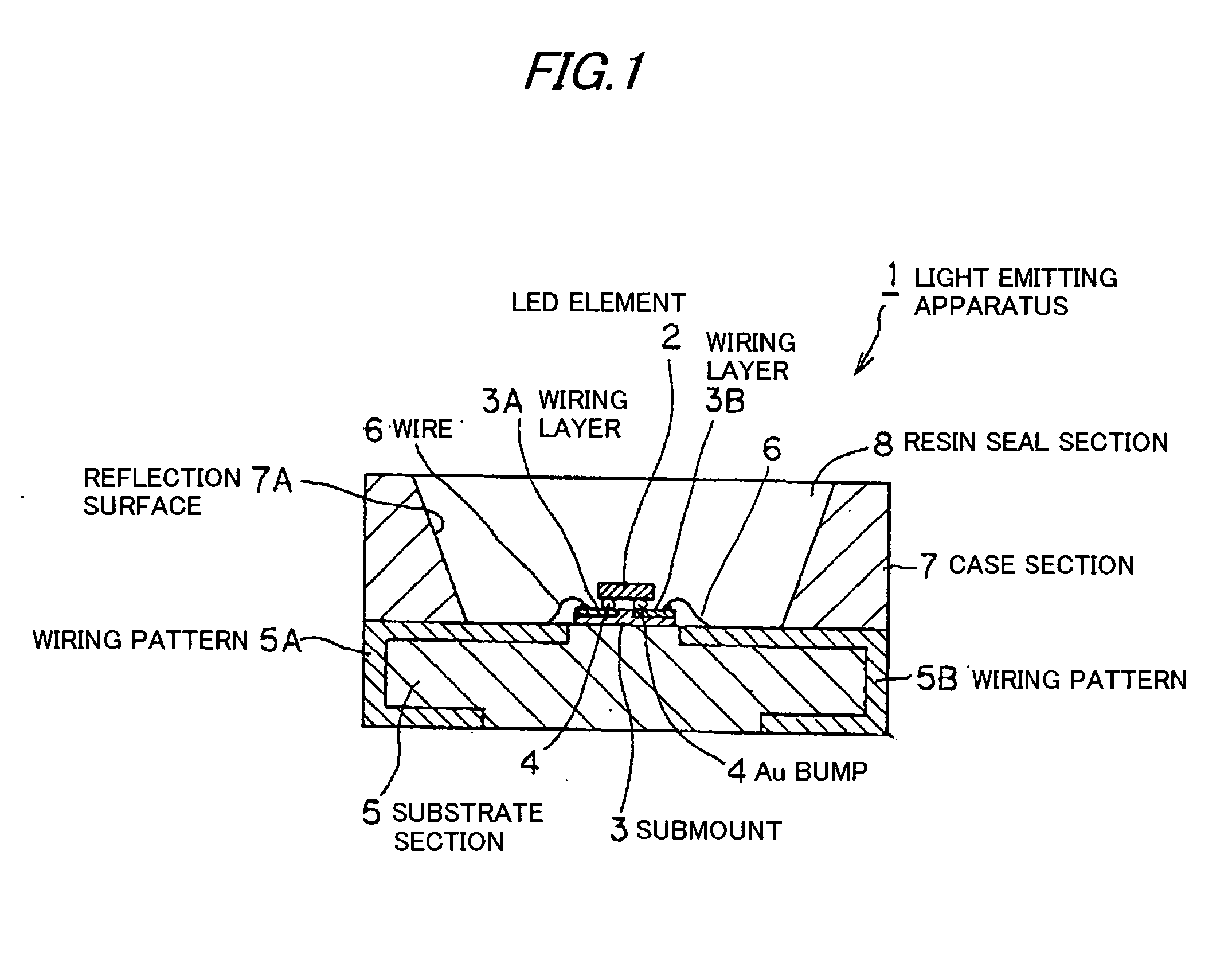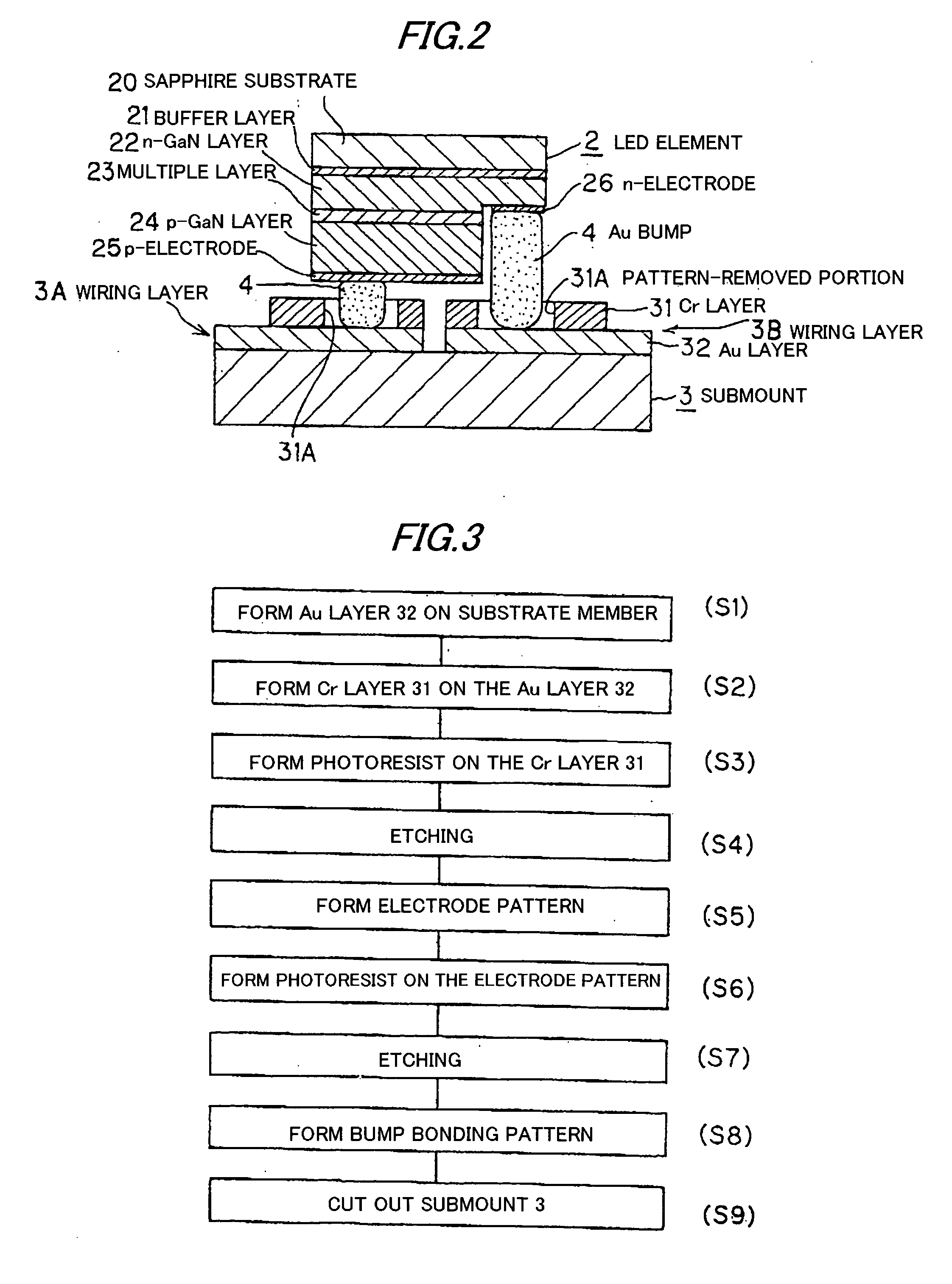Light emitting apparatus
a technology of light emitting apparatus and light beam, which is applied in the direction of discharge tube/lamp details, lighting and heating apparatus, discharge tube luminescnet screens, etc., can solve problems such as reliability deterioration, achieve stable bonding force to the support material, prevent short-cutting between wiring patterns (electrode patterns on the support) and enhance light radiation efficiency and emission efficiency.
- Summary
- Abstract
- Description
- Claims
- Application Information
AI Technical Summary
Benefits of technology
Problems solved by technology
Method used
Image
Examples
first embodiment
[0068] The process of fabricating the submount 3 of the first embodiment will be explained below referring to FIGS. 1, 2 and 3. FIG. 3 is a flowchart showing the process of fabricating the submount 3.
[0069] First, the Au layer 32 as the conductive layer is formed on the surface of the AlN substrate material by deposition (S1). Then, the Cr layer 31 is formed on the Au layer 32 by magnetron sputtering using a Cr target with Ar gas of 10−7 Torr (S2). Then, a photoresist is formed according to an electrode pattern on the Cr layer 31 (S3). Then, the Cr layer 31 is etched by a solution of cerium diammonium nitrate and perchloric acid and the Au layer 32 is further etched by nitrohydrochloric acid (S4). The electrode pattern is formed by the etching (S5). Then, a photoresist is formed according to the bonding pattern of Au bumps 4 on the Cr layer 31 (S6). Then, the Cr layer 31 is etched by the solution of cerium diammonium nitrate and perchloric acid (S7). By this etching, the pattern-rem...
second embodiment
[0083] The process of fabricating the submount 3 of the second embodiment will be explained below referring to FIGS. 4 and 5. FIG. 5 is a flowchart showing the process of fabricating the submount 3.
[0084] First, the Au layer 32 as the conductive layer is formed on the surface of the AlN substrate material by deposition (S1). Then, the barrier metal layer 33 of chromium oxide is formed on the Au layer 32 by magnetron sputtering using a Cr target with Ar / N2 / O2 mixed gas of 10−7 Torr (S2). Then, the Al layer 34 is formed on the barrier metal layer 33 by deposition (S3). Then, a photoresist is formed according to an electrode pattern on the Al layer 34 (S4). Then, the Al layer 34 is etched by a solution of sodium hydroxide, the barrier metal layer 33 is etched by cerium diammonium nitrate and perchloric acid, and the Au layer 32 is etched by nitrohydrochloric acid (S5). The electrode pattern is formed by the etching (S6). Then, a photoresist is formed according to the bonding pattern of...
third embodiment
[0093] The process of fabricating the submount 3 of the third embodiment will be explained below referring to FIGS. 6 and 7. FIG. 7 is a flowchart showing the process of fabricating the submount 3.
[0094] First, the Au layer 32 as the conductive layer is formed on the surface of the AlN substrate material by deposition (S1). Then, the Ag alloy layer 36 is formed on the Au layer 32 by magnetron sputtering using an Ag alloy target with Ar gas of 10−7 Torr (S2). Then, a photoresist is formed according to an electrode pattern on the Ag alloy layer 36 (S3). Then, the Ag alloy layer 36 is etched by a solution of chromic anhydride, perchloric acid and concentrated sulfuric acid and the Au layer 32 is further etched by nitrohydrochloric acid (S4). The electrode pattern is formed by the etching (S5). Then, a photoresist is formed according to the bonding pattern of Au bumps 4 on the Ag alloy layer 36 (S6). Then, the Ag alloy layer 36 is etched by the solution of chromic anhydride, perchloric ...
PUM
 Login to View More
Login to View More Abstract
Description
Claims
Application Information
 Login to View More
Login to View More - R&D
- Intellectual Property
- Life Sciences
- Materials
- Tech Scout
- Unparalleled Data Quality
- Higher Quality Content
- 60% Fewer Hallucinations
Browse by: Latest US Patents, China's latest patents, Technical Efficacy Thesaurus, Application Domain, Technology Topic, Popular Technical Reports.
© 2025 PatSnap. All rights reserved.Legal|Privacy policy|Modern Slavery Act Transparency Statement|Sitemap|About US| Contact US: help@patsnap.com



